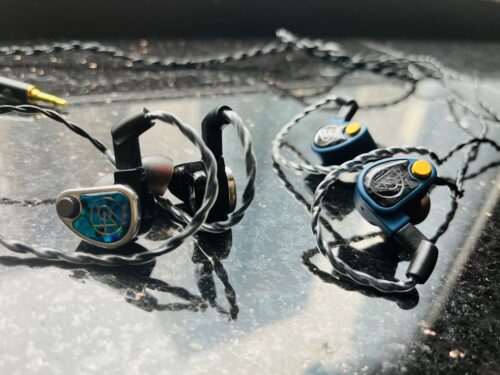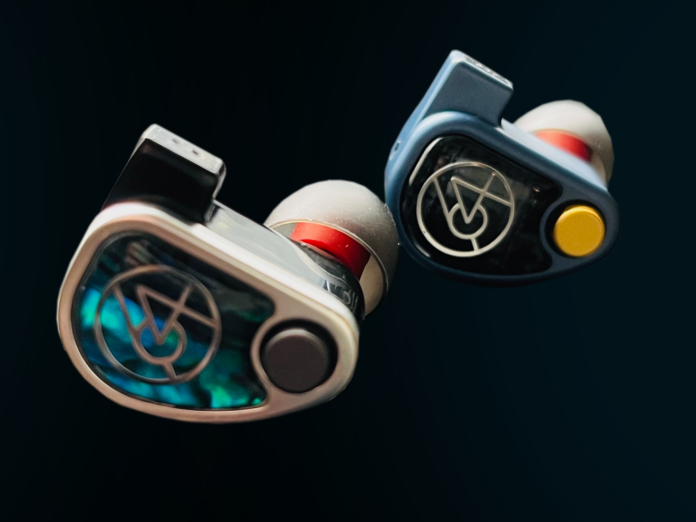64 Audio’s new, U4s, might be a testament to how high the Company’s standards are; even at lower price points, 64 Audio is still able to produce ultra high-end sound quality that can compete with the more extravagant IEM’s made by other brands. You can read MajorHiFi’s U4s review here. Today, I decided to compare the 64 Audio’s latest and most affordable model, the U4s ($1099) with the increasingly popular, yet still “modestly” priced, Nio ($1699). Let’s take a look at what separates these two models in terms of talent and character.
Design
The big difference here lies in the drivers. The Nio is designed with 8 drivers – 1 tia high,1 BA high-mid, 6 BA mid, 1 dynamic low. The U4s employs a more humble, 4 driver set-up setup – 1 tia high, 1 BA high-mid, 1 BA low-mid, 1 dynamic low.
Both, the Nio and the U4s are very easy to drive, with a low impedance of 6 Ohms, and 11 Ohms respectively. Given that both IEMs have cables that are fitted with 3.5mm terminations, I paired them both my unfailing ol’ Dragonfly Cobalt DAC/amp.
Both the Nio and U4s employ 63 Audio’s patented Apex modules, which serve as air pressure vents, while also allowing you to tweak the tuning with the module options included in the box. For the purposes of this review, I used the M15 modules on both IEM models.

Sound Impressions
Soundstage
In this department, the Nio is superior. Although both IEMs show plenty of width and height, the U4s feels rather 2 dimensional compared to the Nio, which delivers quite a bit more depth. For example, listening to the Nio, I sensed instruments being placed behind the ear, while the same tracks played on the U4s seemed more limited to the stereo field. So, the Nio offers a more multidimensional soundscape overall.
Lows
You can expect fatter and deeper bass from the Nio, while the U4s takes a more neutral approach. Bass and sub-bass frequencies offer more body visceral impact on the Nio, while the U4s delivers a relatively modest, yet cleaner and tighter sounding low-end. When listening to cellos in this range, the U4s is not only seemingly more transparent, but also richer in texture. In contrast, the Nio presents a softer, smoother and perhaps less detailed instrument. So, certainly for acoustic instruments, the U4s is the preferable choice in this range.
Mids
One of the biggest differences between the Nio and U4s lies in the midrange balance. The lower half of the midrange on the Nio is much more present than it is on the relatively scooped out U4s. As a result, the Nio offers a lot more body and comprehensiveness to tracks, especially those with heavy instrumentation. In contrast, the U4s smacks a little harder in the upper mids, often giving it a more dynamic flair. In the midrange, the Nio has the more opulent sound of the two, offering a more saturated tone than the comparatively neutral coloration of the U4s.
Highs
The U4s offers a more sparkly and crisp sound than the darker Nio. Therefore, it’s unsurprising that the Nio is also little easier on the ears at the high treble spots. Still, there is an air and lightness in tone on the U4s, which approaches treble instruments and vocals more delicately than the heavier handed Nio in this range. And in this respect, the U4s sounds far from “clinical”. So, unless you’re particularly sensitive to the highest frequencies, I would say that the U4s is the more pleasurable and complete sound in the high end.
Summary
In terms of overall listening satisfaction, its unsurprising that the Nio might be the bigger crowd-pleaser. It not only offers a more dimensional soundstage, but it also delivers a bigger low-end and lusher mids, giving tracks a meatier and more all-encompassing feel. But with respect to sheer skill (soundstage excluded), there is little separating these two models. And if I were solely to listen to acoustic genres, I think I would prefer the more natural and often more attentive sound of the U4s. So, at the end of the day, if you favor a brighter character with a relatively neutral low-end, the U4s should be your pick. But if you enjoy a more bass-heavy sound with a rich midrange and easy highs, the Nio would be the more appropriate choice.
You can buy the 64 Audio Nio and U4s at Audio 46.

Specifications
| 64 Audio Nio | 64 Audio U4s | |
| Drivers | 1 tia high,1 BA high-mid, 6 BA mid, 1 dynamic low | 1 tia high, 1 BA high-mid, 1 BA low-mid, 1 dynamic low. |
| Frequency Response | 10 Hz – 20 kHz | 10 Hz – 20 kHz |
| Impedance | 6 Ohms @ 1kHz | 11 Ohms @ 1kHz |
| Sensitivity | 105 dB | 107 dB |
Compare the ranking of various headphones, earbuds and in-ear monitors using our tools.
Discuss this, and much more, over on our forum.
---MAJORHIFI may receive commissions from retail offers.















